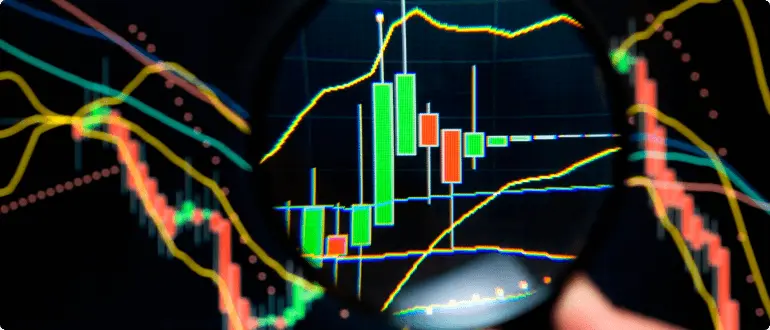Profitable Short-Term forex trading strategies that work| FxPro

Table of Contents
- What is Short-Term forex Trading
- Short-term Trading Strategies
- How to short-term trade
- Choosing the Right Short-Term Trading Strategies
- Best Technical Indicators for Short-Term Trading
- Advantages of Short-Term Trading
- Risks of Short-Term Trading
You can approach the financial market from different angles depending on your goals. Some investors deploy short-term strategies, while others prefer investing for a long time. Others split their portfolios and use a mix of both long-term and short-term trading strategies. If you prefer quick growth, then short-term investments will favour you. Let’s find out more about short-term trading, including the risks and perks that come with it.
What is Short-Term forex Trading
As the name suggests, short-term trading is a forex strategy for taking trades that last a short period. They could last for a few seconds, minutes, or a few days but not months. Most retail traders prefer this method as profit-taking is fast, so you’re able to evaluate your trading easily too. The downside is that you can lose your money faster than wildfire if you’re not careful with your risk management.
Short-term forex trading generally earns the trader relatively small gains that accumulate into solid profit as the trader keeps jumping into and out of the market. Of course, this all depends on their experience and understanding of the market. Lower time-frames come in handy while using this strategy since it's easier to spot entry signals. Should you adopt this trading strategy or not? Well, there is no black and white answer to that, but as you keep reading this article, you’ll acquire enough knowledge to make a proper decision.
Short-term Trading Strategies
1. Scalping
Scalping is like taking one of those roller-coaster rides that keep you on the edge of your seat. Maybe we can call it “fast and furious trading.” It’s fast-paced, electrifying, mind-boggling, yet often fulfilling all at once. Scalpers aim for very few pips and get out of the market to wait for another opportunity. They can continue throughout the day as long as the market gives trading opportunities.
Why is scalping attractive to forex traders? Smaller market formations occur more often than large ones, even when the market has low volatility. This means that traders can have many chances from which they can potentially benefit. Because scalpers invest a lot of their time glued to charts, it is only convenient for people who can focus on charts intensely for long hours without interruptions.
2. Day-trading
Day trading refers to a strategy for buying and selling financial instruments within a specified day period according to the trader’s time zone. Such traders could take trades in the morning and close them in the evening or keep getting into and out of trades across the day. So scalping is also a form of day trading. This process keeps the trader away from risks such as gaps and overnight spreads by not assuming overnight exposure to the market. So you don’t have to worry about any open positions when going to bed at night.
3. Swing-Trading
Swing trading is a style used by investors that want to take advantage of medium-term market movements as the price swings up and down. Unlike day trading and scalping that is fast-paced, this short-term strategy is slower. Swing traders attempt to find short to medium term market trends and invest their money for a few days to weeks. Since it carries heavier risks than other short-term trading strategies, traders spend a lot of time analyzing the market before jumping in. Proper mastery of both technical and fundamental forex strategies comes in handy while swing trading.
4. Hedge Trading News Releases
If you have ever witnessed the volatility that comes with the release of important economic reports such as interest rates news, you would never advise someone to take trades at such times. But did you know there is a short term trading technique that thrives with such conditions?
Major news releases like the Non Farm-Payrolls from the US and Gross Domestic Products or similarly influential economic indicators tend to cause explosive price swings, especially when they are different from what the market was expecting. Some traders make money during such releases by taking positions on both sides of the market a few minutes before the news are released. They buy and sell simultaneously using hedged positions on the same currency pair. Once the data is out, the price has moved in one direction, they will close the other trade and put a stop loss on the one that remains open. This strategy sounds easy in theory, but traders need to master it enough to know what to do in case both trades open.
How to short-term trade
Although short-term trading can offer lucrative opportunities, it can be a ticking time bomb if you jump into it carelessly. Here’s some tips on what to do if you want to short-term trade.
- Identify your most preferred trading session
- Find your best tools for chart analysis
- Devise a risk management procedure
- Pick currency pairs with low spread
- Practice on a demo before opening a live account and starting trading
Choosing the Right Short-Term Trading Strategies
With so many short-term trading strategies available, you may easily get stranded when it comes to selecting the right short-term trading method for you. Here is a list of factors that should influence your decision.
- Time- Are you a full-time trader or not, and what time of the day are you available for trading? Position traders like George Soros worry less about trading sessions. The hours you are available for trading will influence the short-term strategy that works for you as a short-term trader. For example, if you’re only available during the low volume Asian session, scalping could be your best option. You also need to determine how much time you will allocate to trading. A busy trader with little time for the charts could thrive better in swing trading than other short-term strategies.
Personality: Forex trading and psychology go hand in hand. Your personality is more important in trading than you may imagine. Psychological strength and control of emotions while trading varies from trader to the other according to their personality. Trading with a strategy that you’re not comfortable with will induce anxiety, and this could cost you money. For example, if you can’t withstand the pressure and heart-pounding effects of scalping, you’ll burn your trading account if you insist on using this strategy.
Risk Vs Returns: Classify each strategy according to potential rewards and risk, then conduct a personal risk profile to determine which short term strategy falls within your category. Some forex trading strategies like swing trading carry high risks but have the potential to earn huge returns over time. Some investors prefer smaller returns and moderate returns, while others are ready to go all out on risk in pursuit of high profits.
Recent Performance: You don’t just want to settle on a trading technique because it fits your personality. You’re in this for the money after all. So you cannot ignore the issue of how well the strategy performed in the recent weeks. Back-test different strategies to find out how they would have performed in the past. Although past performance is not an indication of the future, it gives you a picture of what to expect if market conditions remain the same.
Best Technical Indicators for Short-Term Trading
- Moving Average: Moving average derives the name from its behaviour. As the price moves over a given period, the moving average draws the path of average closing prices for each time frame. It’s one of the best indicators for short-term trading. Most traders commonly deploy the simple moving average (SMA) and the Exponential Moving Average (EMA) for short-term trading.
- Relative Strength Index: The Relative Strength Index (RSI) is one of the most commonly used technical indicators across the world. Day-traders combine it with the moving average or any other technical indicator for more accurate short-term trading signals. When using the RSI, you want to catch new trends early enough by spotting a change in the strength and velocity of a trend.
- Stochastic Oscillator: The stochastic indicator is another common tool that traders use to identify potential reversals in the market. It calculates momentum in the market by finding the closing price of the previous bar and comparing it with the high and low of the same instrument over the past set number of periods. It’s a good indicator for both short-term and long term forex trading strategies.
Advantages of Short-Term Trading
- Flexibility- Short-term trading offers flexibility as investors can easily access their cash without having to wait for a long period.
- Potentially quick returns- This type of trading helps earn profits for investors in a faster way.
Risks of Short-Term Trading
- Cost- Short term trading exposes you to high spread and potential slippages as you jump in and out of trades.
- Losses- Short-term trading can be a good way of accumulating smaller profits over many trades and end the day with a significant amount of money. Similarly though, you can lose small amounts of money that accumulate into significant losses.
- Poor decision making- Short-term trading offers you little time for proper decision making, hence increasing your losses of failure.




